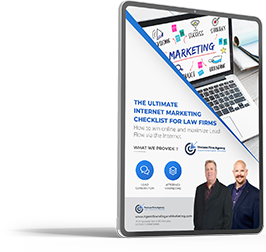
Unless there is a circumstantial need, people rarely come looking for insurance agents. As a result, insurance marketing plays a major role in the success of an agency. It is an essential function of maintaining a steady flow of customers – something that is vital to the business staying afloat. It can help you not just survive but thrive as you build your book of business.
But, not all marketing tactics are created equal. An idea that previously proved effective might well be devastating to your current marketing efforts. Poor insurance marketing tactics are ruinous to insurance agencies, no matter how well executed the ideas are.
With that in mind, it can be useful to learn some common tactics that often destroy an agency’s ability to attract new sales. If you’re doing any of these, stop now.
Quantity at the Expense of Quality
In the digital age, content is king. You can’t develop a modern marketing strategy without factoring in the creation and distribution of compliant content. A popular perception is that more content is better. It’s good for your prospects, search engines, and business.
While more content can be beneficial, there is a key component missing from the equation: quality. Low-quality content does little to drive your business forward, while high-quality content attracts readers and helps you gain traction in the search engines.
If you do not have the resources to offer your prospects plenty of high-quality content, it is better to scale back and focus on giving them quality instead. Never sacrifice quality to try and achieve quantity.
Not Providing Enough Content
While it is important not to stretch your resources too thin and thus dilute the quality of the compliant content you share with your prospects, you should also ensure that you are not offering too little content. Inactive social media channels, no activity on the plethora of online business directories (Yelp, City Search, Four Square, etc) and no regular email communication – are all things that can lead to reduced prospect engagement and fewer clients.
Consistency can often make up for lack of resources. Find a schedule that suits your resources and stick to it – you should post a minimum of 2-3 times per day on Facebook and Google Plus. You should Tweet 3-4 times per day. Because Linkedin is a B2B network, you should post there at least a few times per week.
Keyword Stuffing
Compliant content, first and foremost, should be published with your audience in mind. You do, however, also have to consider the search engines. They do, after all, play a fundamental role in enabling prospects to find your business. That is where search engine optimization and keywords come in.
The topic of SEO and keyword research is extensive. But, suffice to say, these are highly important aspects of insurance marketing. Most marketers understand that Google’s algorithms display websites (broadly speaking) based on keywords found on a page. That understanding has led some people to conclude that the more times a keyword is found on a page, the better.
Adding a keyword numerous times, just to add them, is affectionately called “keyword stuffing.” It will not only ruin the aesthetics of the content, but it might also result in your website getting penalized by Google. Penalties can include losing website rankings or being dropped from the search results altogether. The key is to use your most important keywords is ways that appear “natural” to the user, according to Google and SEO experts.
Google considers keyword stuffing “black hat webspam” and the opposite of “white hat” SEO. Always ensure that the content published on your website, and anywhere else online is considered “White Hat.”
Ignoring Social Media
It is becoming increasingly difficult for any business to ignore social media, but especially insurance and financial services agencies. Why? We’re in the “people business,” and today people are jumping online at a dizzying pace. That phenomena is happening, because most people enjoy building, and maintaining, relationships. The most effective, and efficient, way of doing that is via social networking. People are able to communicate via posts, chat, still pictures, video and now through something called Facebook Live, Periscope. Millions of people are even shooting their own videos and posting them to YouTube; then they send the link to their friends and family to watch the video, of let’s say last Saturday’s wedding. Amazing stuff is happening online and especially on the social media networks. We operate in an industry that desperately needs to engage the younger generation, and there is no better place to achieve that than on social media.
According to Statista, around a third of the world’s population will be on social media by 2020 – that’s around 2.96 billion people. Most of those users are millennials, which are a highly business-critical segment. If you are one of the few who are still ignoring social media, it is not too late to start leveraging the marketing power of these platforms.
There are cost-effective ways to generate new business on social media powerhouses such as Facebook, Twitter, G+ and LinkedIn. Use paid advertising, just as you are probably already accustomed to doing with Google’s PPC, in conjunction with other marketing methods that cost little more than an investment of time and creativity.
Like SEO, social media is a lengthy topic that is beyond the scope of this article. The following free e-book is a great resource for learning about social media marketing.

Using Automated Social Responses
Technology has allowed us to automate many aspects of marketing that would normally have to be done manually. It allows us to save time and focus our efforts on tasks that still require our manual input. But, just because a task can be automated does not necessarily mean you should.
One example of damaging automation is the direct message auto-response on Twitter. It works like this; you decide to follow someone of interest on Twitter. Immediately after pressing the “follow” button you get a message in your private Twitter message inbox. It usually says something like “Hi, thanks for the follow. Why not check out my great website, www.impersonalandautomated.com.”
That type of thing is widely accepted as a bad marketing tactic. Automating social media communication is a quick way to turn people off from your brand. While some automation is to be expected, users demand a certain degree of genuine socializing on social media.
Canned responses are easy to spot. Be sure to make responding to messages and questions part of your business process. Schedule time each day to interact on social media either in person or by a member of your team.
In the End
Insurance marketing is not easy. Now, more than ever, it is important to find innovative ways to entice and engage new prospects. If your current marketing strategy includes any of the tactics mentioned above, it does not mean you are a terrible insurance marketer. The marketing landscape changes swiftly and often without warning. It just means that you need to make a few “course corrections.”
A few simple tweaks will help to ensure that your marketing is in good shape so that you attract new customers.






